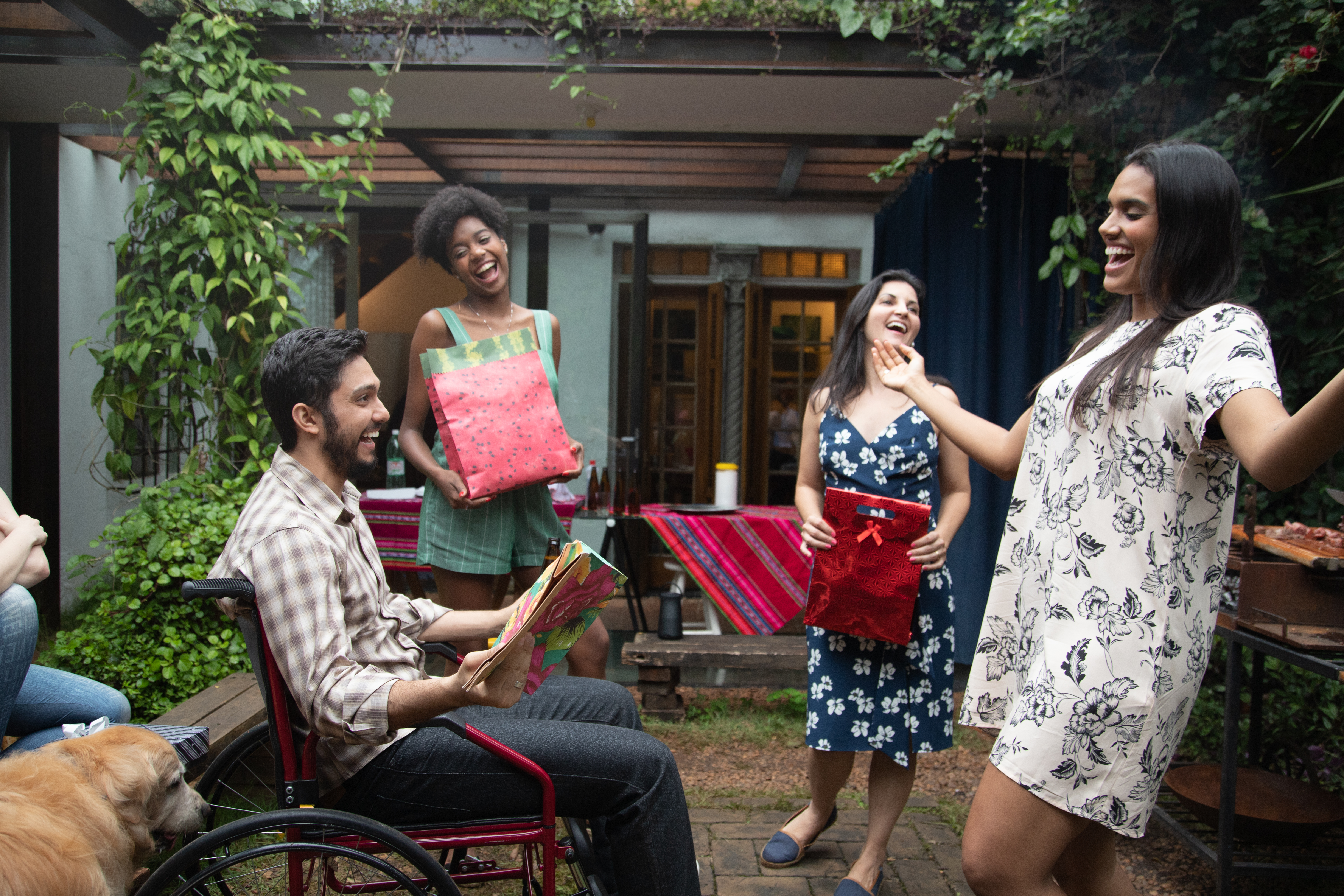Is Everyone Else Having More Fun?
1.1 SAMPLING: IS EVERYONE ELSE HAVING MORE FUN?1 of 10
Welcome
Is Everyone Else Having More Fun?
Authors:
Kelly M. Goedert, Seton Hall University
Susan A. Nolan, Seton Hall University
Kaylise D. Algrim, Seton Hall University
As human beings, we’re pretty good at protecting our egos. Generally, we think we’re smarter, funnier, and more charitable than our peers. Unfortunately, we’re not particularly good at guessing whether those qualities result in an active social life. A series of studies looked at how people assessed their social lives in comparison to other people to see if they considered themselves to be social butterflies or social caterpillars (Deri, Davidai, & Gilovich, 2017). In one study, researchers asked participants to report how often they engaged in various social activities in comparison to other people. Here are two examples from the study – one on this screen and one on the next. If you were a participant, how would you respond?

1.2 SAMPLING: IS EVERYONE ELSE HAVING MORE FUN?2 of 10
How would you respond to this second question if you were a participant?
1.3 SAMPLING: IS EVERYONE ELSE HAVING MORE FUN?3 of 10
In a series of studies, Sebastian Deri and his colleagues (2017) asked multiple groups about the number of friend groups they had and how often they attended different social events. They then asked participants how they thought their own numbers compared to other people’s: Did participants see themselves as less social, the same as, or more social than others?
In the first study, the researchers reported that: “Three hundred four participants from Amazon’s Mechanical Turk (150 women; Mage = 37.1; 78% White, 10% Black, and 6% Asian) completed a survey in exchange for modest payment” (p. 860).
1.4 SAMPLING: IS EVERYONE ELSE HAVING MORE FUN?4 of 10
Here again is the description of the sample for the first study: “Three hundred four participants from Amazon’s Mechanical Turk (150 women; Mage = 37.1; 78% White, 10% Black, and 6% Asian) completed a survey in exchange for modest payment” (p. 860).
1.5 SAMPLING: IS EVERYONE ELSE HAVING MORE FUN?5 of 10
Here again is the description of the sample for the first study: “Three hundred four participants from Amazon’s Mechanical Turk (150 women; Mage = 37.1; 78% White, 10% Black, and 6% Asian) completed a survey in exchange for modest payment” (p. 860).
1.6 SAMPLING: IS EVERYONE ELSE HAVING MORE FUN?6 of 10
Here again is the description of the sample for the first study: “Three hundred four participants from Amazon’s Mechanical Turk (150 women; Mage = 37.1; 78% White, 10% Black, and 6% Asian) completed a survey in exchange for modest payment” (p. 860).
1.7 SAMPLING: IS EVERYONE ELSE HAVING MORE FUN?7 of 10
Here again is the description of the sample for the first study: “Three hundred four participants from Amazon’s Mechanical Turk (150 women; Mage = 37.1; 78% White, 10% Black, and 6% Asian) completed a survey in exchange for modest payment” (p. 860).
1.8 SAMPLING: IS EVERYONE ELSE HAVING MORE FUN?8 of 10
In the first study with MTurkers, the researchers found that their sample, on average, saw themselves as less social than other people on every item they measured. However, the researchers also noted other research suggesting that MTurkers may be less outgoing than people in the general population. For this reason, they used other samples as well. They summarized the different types of samples they used in their study as follows: “In 11 studies, we examine whether people believe that others lead richer social lives than they do themselves. We begin by directly asking Mechanical Turk respondents (Study 1), shoppers at a local mall (Study 2A), college students (Study 2B), and respondents from a large, income-stratified panel (Study 2C) whether they believe their social lives are less rich and active than those of others” (p. 860).
For Study 2C, they further clarified: “Data were collected using an online survey agency … that commissions large-scale stratified samples by recruiting participants from a wide array of sources on the web” (p. 861). (Note that “income-stratified” means that the agency explicitly recruited participants from across a range of incomes.)
1.9 SAMPLING: IS EVERYONE ELSE HAVING MORE FUN?9 of 10
It wasn’t just the MTurkers. Participants in all kinds of samples tended to see themselves as less social than others. Let’s look at another sample that the researchers used in the series of studies: “Three hundred one participants from Amazon’s Mechanical Turk (137 women, Mage = 37.44; 77% White, 9% Asian, and 7% Black) participated in a preregistered survey (https://aspredicted.org; #3311) in exchange for modest payment” (p. 867).
1.10 SAMPLING: IS EVERYONE ELSE HAVING MORE FUN?10 of 10
The bottom line: No matter the sample, people tend to believe they are less social than others. So when you feel as if you’re the only person at home reading a book, remember there is more to life than what you see on social media.

REFERENCES
Deri, S., Davidai, S., & Gilovich, T. (2017). Home alone: Why people believe others’ social lives are richer than their own. Journal of Personality and Social Psychology, 113, 858–877. https://doi.org/10.1037/pspa0000105